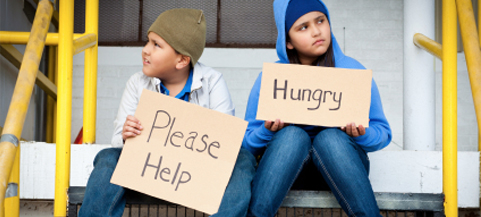By: Brianna Piserchio
Poverty in the Bay Area has always been a problem, especially in certain areas such as: Oakland, Richmond and San Francisco. Today in San Francisco, there is a 'different kind of homelessness' where poverty and homelessness is stretching out of the inner city into suburban outskirts. In 4 years alone (2005-2009) there was a 9% rise in poverty in the suburbs, now 16% poverty in the suburbs. The new, different kind of homelessness would be, "There's fewer chronic homeless and more people just lost their jobs and couldn’t keep up on their home payments." said Capt. Michael Paugh. Poverty now-a-days is formed and brought up mainly because of the drop of the housing bubble, 20,000 individuals have undergone foreclosures.
By Ashley Jackson
In D.C. recently, there has been a major spike in homeless teens. Even though this is the case, there has also been a recent cut of a budget that was intended to help with the problem by funding a shelter that provides the homeless teens with a place to stay and that gives counseling and prevention programs. The funding cuts reached 1.1 million dollars, causing the shelter to limit its services.
D.C. isn't the only place that's seeing a high rate of homeless teens, but it's really a problem all over the world. The main cause of teens becoming homeless is running away because of reasons such as physical or sexual abuse, addiction of a family member, and parent neglect. Although this isn't the case for everyone, many teens who become homeless become exposed to drugs, violence, crime, and homicide. Since they have nowhere to stay, a lot of the time they will squat in vacant homes, sleep on the streets, go to homeless shelters, or sometimes halfway houses. When a teen is homeless, they also tend to drop out of school because of a lack of confidence in themselves. In America, there is an estimated 1.6 to 2.8 million teens who were runaways, throwaways, or just homeless youths. When they are subjected to this kind of environmental living, they tend to go into a survival mode or a comfort method, which means many will use sex to get them things, increasing their risk of also getting HIV or STD's.
By Siera Brown
There could be many causes to the excessive rates of poverty. Trying to fix poverty seems to always be the unfixable problem of every society. What are the main causes of poverty though? Once we get down to the roots the answers to our problems could be simpler.
One major cause I would like to point out is, if you are already poor it is harder to get the medical attention, education and standard of living. I feel as though we fail to tend to those who have so little.
For average everyday people like us who don't have access to tons of money or political power it may seem harder to help those in need, but its not. There are various ways to help people who get lower then the minimum in life.
For instance you can donate food, clothes, blankets and any other necessity to charity that you may not use or need anymore. Also, you can volunteer your time and service in the food kitchen, shelters and orphanages. You can also get more involved by educating those who have not been able to realize the severe poverty in the world today. Any sort of knowledge reflected on the general public is a step closer to showing people todays problems. You may be to busy with work and family yo volunteer your time, so in that case spare a few dollars to an organization, program or person in need.
I don't think people expect just one person to fix this poverty problem. Ideally, we all should work together to see a different world, so we can can help those who can not afford to even keep themselves alive.
If you can't feed a hundred people, then feed just one. ~Mother Teresa
By: Deyaniro Delgado
Over 72 million children world wide have no education or aren't able to go to school because of their sex, religion, language, ethnic background, finacial problems, poverty and several more reasons. Many places in Africa, Asia and Middle East are strongly against education rights for girls and women. Alot of places in these countries are also ruled by warlords, very poor, living in poverty, or the education isn't free like America. In Saudi Arabia the litericy rate for boys is 78% and for girls the rate is 48%, in Nigeria the rate for boys is 62% and for girls its 39% and in Libia the rate for boys is 75%. Not every child in the world doesn't have the right or access to an education, but everyone should. Some children get taken from their families or abducted. Those who are taken into foster care often get separated from their siblings and bounced around to too many different foster placements. Some endure further abuse in the child welfare systems that are supposed to protect them. Instead of being safely reunified with their families or moved quickly into adoptive homes when reunification proves impossible many languish for years in temporary foster care placements or institutions.

 RSS Feed
RSS Feed